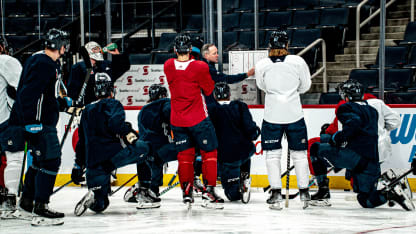He's seen the success teams can have with it first-hand. He dealt with the Washington Capitals in the Stanley Cup Final in 2018 doing it game, after game, after game.
"When I played in Washington, some guys did, some guys wouldn't, and then the next year when I played them in the finals, it seemed like every guy did, and it makes it that much more difficult (to defend)," said Schmidt. "You may not be the hero on the play, but trust me, your linemates and your teammates are going to be awfully grateful for it. And I think that's what we have to understand."
Getting bodies in front of opposing goaltenders creates traffic in that critical area of the offensive zone, but it also creates more space for other players on the line to make plays.
As Schmidt says, it forces the opposition's defencemen to back off.
"If Jansen Harkins gets to the net and Kyle Connor and Pierre-Luc Dubois have more time in the zone to do their own thing, that's a benefit for us," said Schmidt. "That's how you have to view it, and whether you give the me extra time, heck, I'll take all the seconds you'll give me, right? I need it. So the more time and space there is out there, it's good. And for a guy like me, it's even better."
Lowry said there are a number of examples of Jets players getting to that crucial area. There is game footage, but also practice footage that is shown to the players during video sessions.
It's that important to what the Jets want to do, and Lowry anticipates there will be more and more footage as the games go on.
"It's not always going to be the same guy that's going to be designated that he has to be the net front guy," Lowry said. "What we really want is we want drivers in our offence. We want guys that, once the puck enters the zone, we want guys that are going to get to that area. And, at the end of the day, the puck has to end up there to score goals."



















